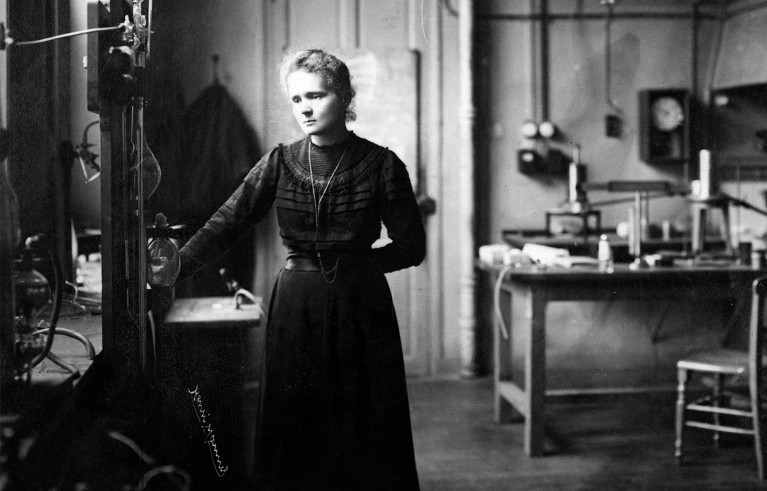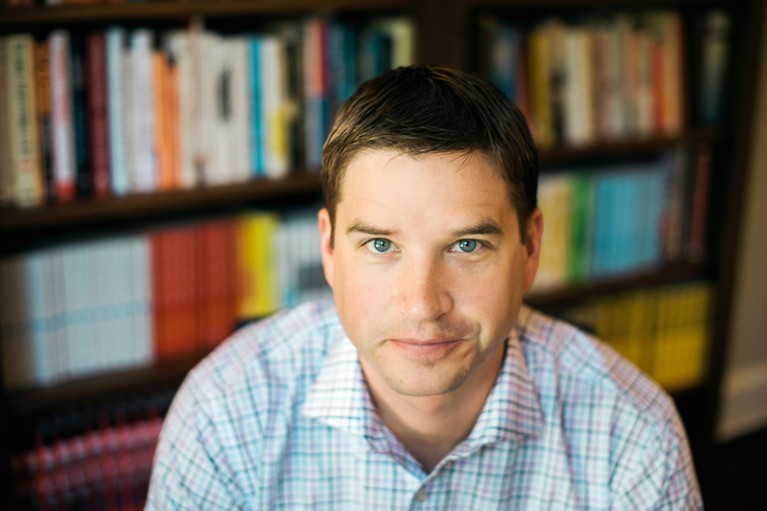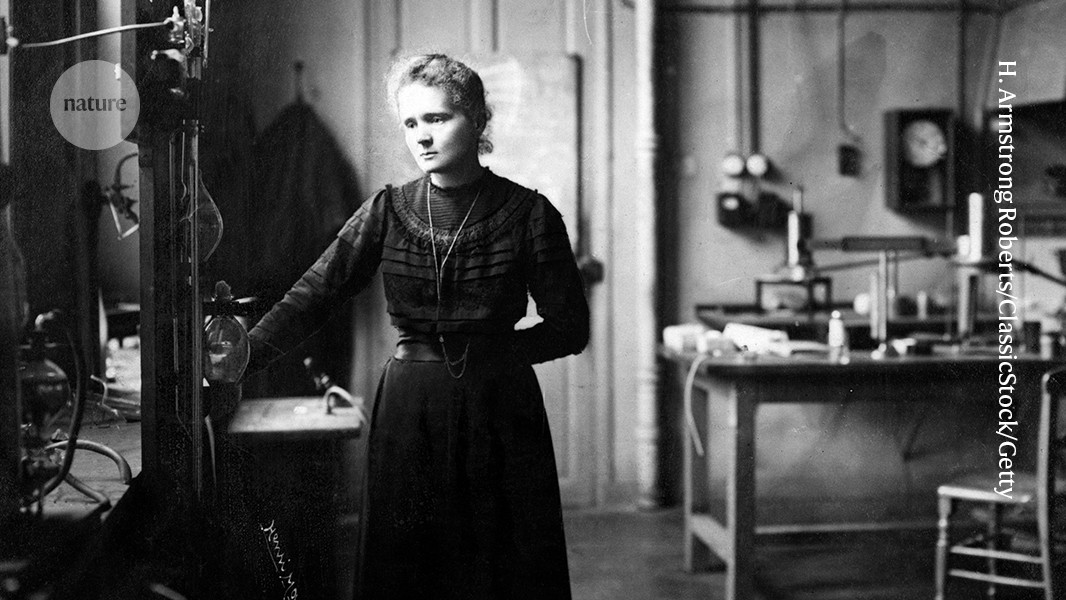
Marie Curie’s research straddled many decades and involved periods of rest and reflection in the French countryside.Credit: H. Armstrong Roberts/ClassicStock/Getty
Sara, a university professor, describes a typical working day for her as including a barrage of “back-and-forth e-mails, Slack, last-minute Zoom meetings”. These, she says, “prevent me — and everyone in general, I feel — from actually having the time to do deep work, think, write, with high quality”.
Her lot, recounted in Cal Newport’s book Slow Productivity (2024), is one that will be shared by many of her academic peers and other ‘knowledge workers’, the term Newport uses for people whose working day is spent largely thinking about problems and how to resolve them, rather than making a product or directly serving people.
Slow Productivity is a call to arms to reject the performative busyness of the modern workplace, where frequent virtual meetings and long e-mail chains sap so much of workers’ attention. One exhausted postdoctoral researcher interviewed by Newport defined productivity, as it is currently measured in academia, as “working all the time”.
Newport, whose day job is as a computer science at Georgetown University in Washington DC, says that the COVID-19 pandemic and the increase in home working has accelerated a shift towards what he and other workplace commentators term pseudo-productivity or pseudo-activity — rattling through a lengthy to-do list rather than focusing on tasks that require deeper thinking and reflection.
Science must protect thinking time in a world of instant communication
“That, combined with the front-office IT revolution — personal computers, then portable computers with e-mail and networks, and then smartphones — meant that things really began to spin out of control for knowledge workers and the toll of exhaustion and burnout have begun to increase,” he adds.
Instead, Newport urges knowledge workers to “do fewer things. Work at a natural pace. Obsess over quality.” Psychologist Megan Rogers tries to apply this advice, although not always successfully. A fan of Newport’s work, she spent a year tracking her time on a spreadsheet before starting a faculty position at Texas State University in San Marcos. “I try to put no more than five things on my daily to-do list but often get flooded with other, more urgent tasks,” she says. “But I do generally succeed in working at a more natural pace rather than feeling as though I’m rushing. Having flexible working hours helps here. I tend to follow my energy as much as possible, rather than forcing tasks into specific slots of time.”
Learning from the greats
Newport’s book is full of examples of academics and other knowledge workers who have taken radical steps to free themselves from distractions in their quest to produce great work.
Poet and author Maya Angelou, for example, would write in a hotel room with all the artwork removed so that she could focus on her writing. Theoretical physicist Richard Feynman avoided doing committee work and other commitments to focus on the deep thinking his research required. Feynman thought that peace of mind was the most important requisite of creative work, according to his friend and former colleague, computer scientist Stephen Wolfram. In a 2005 talk, Wolfram recalled Feynman’s conviction that “one should always stay away from anything worldly, like management”.
How to manage your time as a researcher
Newport acknowledges that most of us are not like Feynman — people cannot simply ignore their supervisors’ demands while thinking great thoughts. He thinks that academics are prime examples of how work has shifted in recent decades.
“My grandfather was a professor and didn’t own a computer. But his goal was the same as a professor today: to produce books and articles. He produced a ton of books and was very productive. So what have we gained in the twenty-first century, when professors now also send and receive 100 e-mails a day?” he says.
Slow Productivity is Newport’s eighth book. It builds on his previous writing on the dangers of digital distractions, including A World Without Email (2021) and Deep Work: Rules for Success in a Distracted World (2016).
In his weekly podcast, which launched in 2020, he answers listeners’ questions and talks in depth about his ideas on productivity, concentration and distractions. As well as being a book about ideas, Slow Productivity includes practical tips, such as blocking out time in your day when you don’t look at your e-mails (See ‘Seven ways to practise slow productivity in the lab’).
“A big thing I tried to do in the book is figure out how you can leverage the autonomy you have and how you organize your labour to get away from the worst excesses of super productivity. You can’t say no to a lot of things. But you can have a more transparent workload management system so your boss can see you’re doing all the things you’re being asked to do,” he says.
From student to teacher
It was during his time as a computer science undergraduate at Dartmouth College in Hanover, New Hampshire, that Newport had the idea for his first book, on how to succeed at university.
He got advice from a literary-agent friend and ended up with a US$40,000 advance for How to Win at College (2005).
He then wrote How to be a Straight-A Student (2006), which has sold around a quarter of a million copies, and How to be a High School Superstar (2010).
When he graduated from Dartmouth in 2004, he realized that he wanted a career that would give him the flexibility to continue writing — so he rejected job offers from technology firms and instead began graduate studies at the Massachusetts Institute of Technology (MIT) in Cambridge. There, he gained his master’s and then his doctorate in 2009, for research focused on distributed algorithms — the study of what happens when an algorithm runs on different networks and processors. His adviser at MIT, Nancy Lynch, an engineering and computer scientist, was one of the people who defined the field. They have continued to collaborate.

Computer scientist Cal Newport writes books on work in the digital age.Credit: Penny Gray Photography
At MIT, Newport joined the theory of computation group — a collection of individuals he describes as “preposterous” because of their prodigious achievements.
“It’s the kind of thing a screenwriter would make up,” he says. “One of the other new doctoral students was 16 and had already been out of university for two years working for Microsoft. There was a professor who had just turned 21 and had won a MacArthur Genius Grant at 18 for solving this long-standing theorem,” he says.
“It was super autonomous, super entrepreneurial. We were told to go and find people, have smart ideas and publish,” he adds.
It was among these geniuses that Newport’s ideas on the importance of concentration and focus were seeded.
“I learnt great lessons about the importance of concentration. The students had a distrust of digital technology versus the human brain. These are computer scientists who don’t use computers,” he says, adding, “These ideas infused my thinking. It was an important, formative time, even if I didn’t realize that until later.”
After he graduated he was appointed assistant professor at Georgetown, becoming a research professor in 2023, all the while combining research and teaching with his popular writing.
Fed up and burnt out: ‘quiet quitting’ hits academia
He says that his bosses at Georgetown have been supportive of his non-academic work but adds that his growing success as a writer has not benefited his university career.
“When I was going for tenure, I don’t think I even mentioned that my fifth book had just come out,” he says. “They don’t care about popular-science books.”
In the earlier years of writing and working as an academic, the two parts of his life were separate, but they have now started to converge.
“I’m a computer scientist writing about how technology impacts us and what we can do about that, so I’ve come to realize that it makes sense that my writing and my academic work are connected,” he says.
Newport’s work is now focusing more on technology in society: he is one of the founding faculty members of the Center for Digital Ethics at Georgetown and has introduced a new undergraduate programme in computer science, ethics and society.
He thinks that academics have a duty to their students to demonstrate the importance of focus.
“Academia should be the place where we lean hard into the life of the mind and not be distracted, so we can be exemplars to our students of treating our minds seriously,” he says.
One limitation of Newport’s advice is in its applicability to experimental disciplines, says RNA biologist Maya Gosztyla. Gosztyla is a recent PhD graduate from the University of California, San Diego, who has written about her own time-management tools and techniques, and has read most of Newport’s books, including Slow Productivity. “Newport is a theoretician, so his research schedule is entirely within his control; my stem cells don’t care if it’s a weekend, they still need to be fed,” she says.
Time management for scientists
Although maintaining a regular schedule isn’t always feasible for experimentalists, it’s still something to strive for, she adds. “When I have an unavoidable long day of experiments, or need to maintain cells over the weekend, I try to schedule some lighter days the following week to compensate.”
She continues: “The irregularity of experimental work also emphasizes the importance of maintaining rituals wherever possible, particularly for reading papers and other low-urgency tasks that could otherwise slip through the cracks.”
Gosztyla says that, for her thesis, she specifically sought out a laboratory that would give her the freedom to set her own hours. Also, ruthlessly trimming her to-do list opens up the mental space necessary to think about her science and experiments.
“I believe academia would be a healthier, more productive space if more mentors encouraged this mindset,” she says.
Rogers highlights academia’s obsession with quantity and publication metrics as a potential systemic barrier to implementing Newport’s philosophy, but also argues that quantity and quality are correlated. “The more you do something, the higher quality you tend to do it,” she says. “Obviously, this isn’t necessarily the case for everyone or everything, but I’ve noticed it at least in my own work.”






